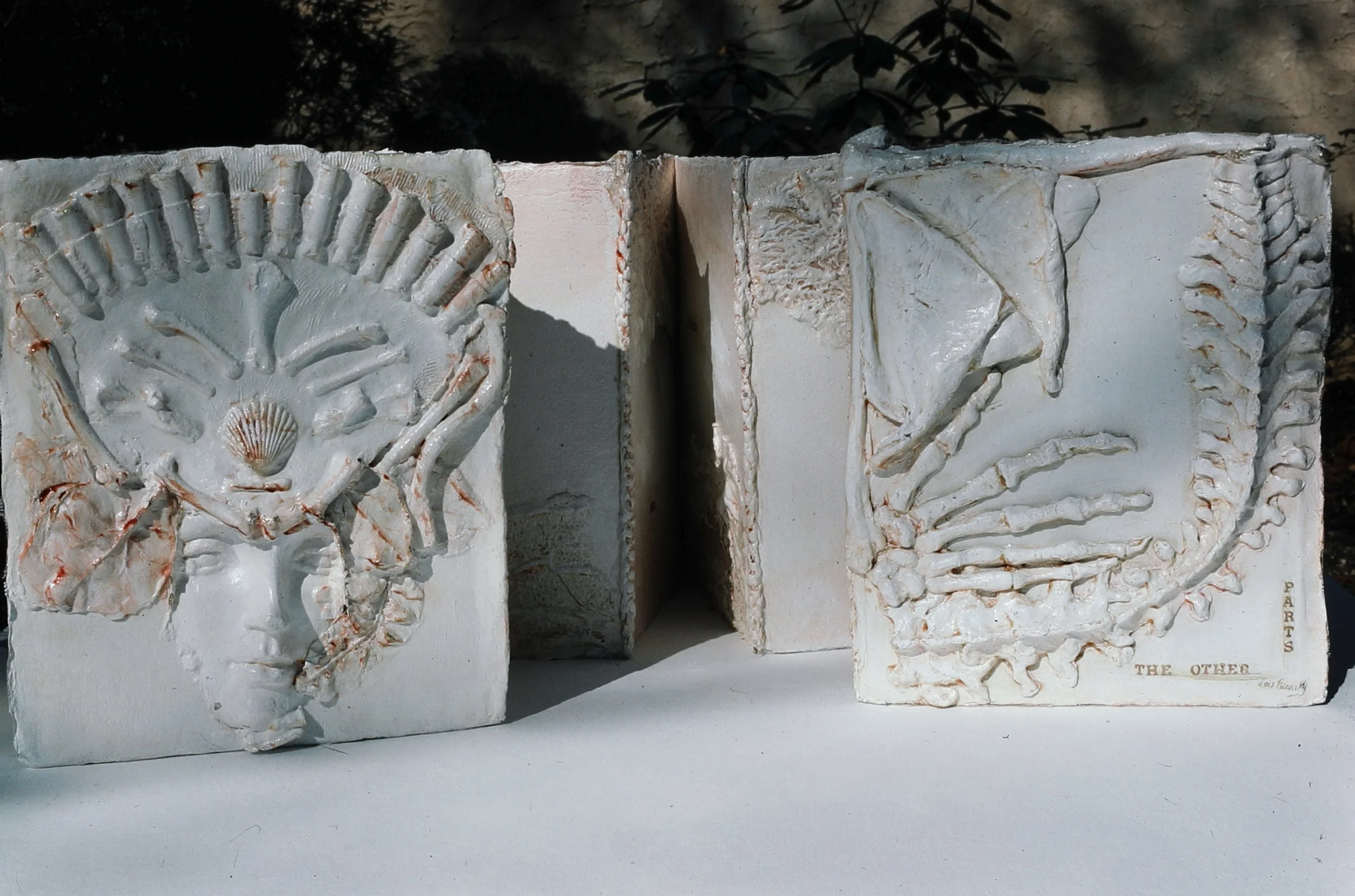Artist Books
Lois Polansky, an orthodox printmaker, began her odyssey to bookmaking in the late 1970s when she dipped into a small inheritance from her grandmother, Mary Jaffe, and plunked down $500 for a concentrated course in papermaking at Bennington College in Vermont. If she had any doubts about the venture, her confidence was restored when she found Riva Castleman, a staff member of The Museum of Modern Art, and Kenneth Noland, the painter, were fellow students in the course. Papermaking turned out to be an exhilarating experience for Lois. For one whole week she joyously macerated cotton linters and cooked them up with color and plant fragments. But when the course was over, and she returned home with her handmade paper samples, they looked like nothing at all. In fact, she pronounced them ugly, and found it hard to justify the week away from her family, not to mention frittering away $500 of her grandmother’s diligently nurtured savings. Then one day while randomly examining her paper samples, trying to find some justification for their existence, she inadvertently laid them down in two piles, side-by-side, and suddenly saw the solution: paper was for making books! Thus began an adventure in bookmaking which combined her newly acquired skills in papermaking with a full range of her etching techniques and took her far beyond her initial vision.
“Everything changed when I discovered the BOOK; a compendium of all the variations in the edition, a container for process and ideas, a companion to confide in and repair to as experience unfolded. Books for me were the perfect artistic vehicle because they are a blend of so many different parts and forms.” -Lois Polansky


















When Lois Polansky first embarked on her bookwork journey the Women’s Movement was in full swing. Lois read Colette and Simone de Beauvoir. She mulled over women’s role in history…in contemporary society…in her own family. Her first book was a family album and personal diary with etchings of her grandparents, her mother in various stages of growing up, and a personal running commentary by Lois. A second book was dedicated to a beloved tree in her front yard. It contained etchings of the tree in its bare winter limbs and full foliage, and souvenir leaves of the tree were randomly impregnated in the handmade paper. Another book celebrated Nature, with leave, herbs, grasses and flower heads cast into the paper, along with remnants of the telephone book and dictionary pages in which the flowers were pressed. A Victorian book— all in white — was a synthesis of flowers, ribbons and decorative embellishments reminiscent of the era. In contrast, a Holocaust book, in chilling ashen gray, took the form of a photo album with cutouts representing the people exterminated.
“My work celebrates aspects historically associated with the book as an object to read, view, and experience; a synthesis of change, and a record of time and events. I blend image and text together on the surface of handformed leaves of paper that have been dyed, embedded, embossed, lacquered, and stitched into objects which through variations in their shape, scale, folds or patterns take on the appearance of plants, butterflies, fans, and garments. I explore the mystery of concrete objects that exist in the realm between two and three dimensions also, in the space between art and life. I favor the diptych form with its implicit mirror images that serve as reflectors for my personal art fantasies.” — Lois Polansky